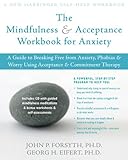How to Mind Control
Article by Ewin Chia
It is really no surprise why people would like to learn how to mind control. By controlling a person's mind, one gets to dictate how a person thinks and what he or she does as well. It is rather the most effective way of controlling a person. Animals can be physically controlled through leashes, cages, and the like, but in the case of people, these ways are considered harsh, cruel, and downright inhumane. Thus, people who desire to control others turn to the power, and the vulnerability, of the human mind.
Mind control, otherwise known as brainwashing, has a more academic term - coercive persuasion. From this academic term alone, we can already develop a number of impressions and interpretations regarding the concept of mind control. First, from the term 'coercive,' we can assert that mind control really is a matter of enforcing one's authority over another. This has to be made clear, since there is no point in trying to control one's mind if that person actually wants his mind to be controlled by someone else.
Secondly, from the term 'persuasion,' we can argue that mind controlling is not a superhuman activity. Anyone can develop this skill. It is not a mystical power that is given by forces beyond human rationality. In addition to that, the term denotes convincing someone. It involves influencing someone to follow you. It is congruent to the ideas suggested by the first term 'coercive,' which explains the initial refusal of the person, but his subsequent succumbing to your attempts to control his mind in the end.
There are a few tips on how to mind control. These tips should be done to the person continuously, not just once, not just twice, but numerous instances over a considerably long period of time. 3 of the most popular and widely-used tips follow:
Tip 1: Softening up the person. This is done obviously to make the mind more vulnerable for outside control. TV has made this step quite popular by showing scenes of a rotating disc which the person is instructed to fol! low. Oth er forms include instructing the person to concentrate on the music played for him, asking him to close his eyes and relax, and so on. Whatever the way chosen, the goal is simply to soften up the person. Once the person is softened up, then proceed to Tip 2.
Tip 2: Challenge the person's confidence in himself and his judgment. In order to induce a person to not follow his own thoughts and instead follow yours, the possibility that his own thoughts may cause guilt, anxiety, or any other feeling which attacks his or her self-esteem must be made aware to him. In short, make the person see that his own judgment is wrong, thus he has no choice but to follow yours. Once this doubt on the person's own decision making skills is established, he or she is now very much ready to follow anything you tell him or her.
Tip 3: Slowly influence the person with soft yet firm commands. This is the part where the person's mind is actually being controlled. The powerlessness he has developed in Tip 2 opens up the stage for him to be instructed anything.
You can encounter variations of these 3 tips, but the main thought and goals of the steps are pretty much the same. As you may have discovered, this is just a very simple exercise, but once mastered, could be very powerful to the person who has mastered the craft. Always keep in mind to use this exercise morally. These moral justifications are perhaps the only valid ones on how to mind control.
About the Author
Ready to unlock the secrets of How to mind control to improve your life? I reveal all the secrets you will need to know at www.secretofmindpower.com </span>
Learn how to reduce stress through Mindful Living techniques - Mayo Clinic

The Mindfulness and Acceptance Workbook for Anxiety: A Guide to Breaking Free from Anxiety, Phobias, and Worry Using Acceptance and Commitment Therapy

- ISBN13: 9781572244993
- Condition: New
- Notes: BRAND NEW FROM PUBLISHER! 100% Satisfaction Guarantee. Tracking provided on most orders. Buy with Confidence! Millions of books sold!
Attempts to manage your thoughts or get rid of worry, fear, and panic can leave you feeling frustrated and powerless. But you can take back your life from anxiety without controlling anxious thoughts and feelings. You can stop avoiding anxiety and start showing up to your life. The Mindfulness & Acceptance Workbook for Anxiety will get you started, using a revolutionary new approach called acceptance and commitment therapy, or ACT.
The book has one purpose: to help you live better, more fully, more richly. Your life is calling on you to make that choice, and the skills in this workbook can help you make it happen. Find out how your mind can trap you, keeping you stuck and struggling in anxiety and fear. Learn to nurture your capacity for acceptance, mindfulness, kindness, and compassion. Use these qualities to shift your focus away from anxiety and onto what you really want your life to be about. As you do, your life will get bigger as your anxious suffering gets smaller. No matter what kind of anxiety problem you're struggling with, this workbook can guide you toward a more vibrant and purposeful life. Includes a CD with bonus worksheets, self-assessments, and guided mindfulness meditations.
List Price: $ 24.95 Price: $ 14.25


Comments
Post a Comment